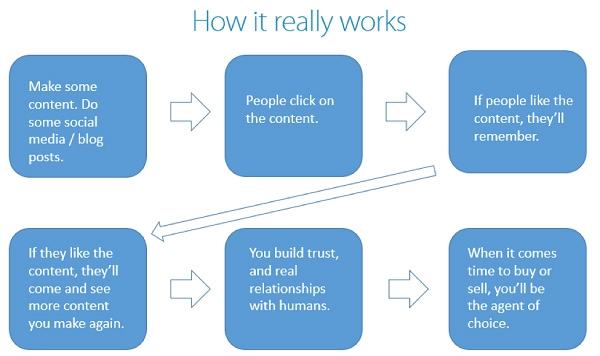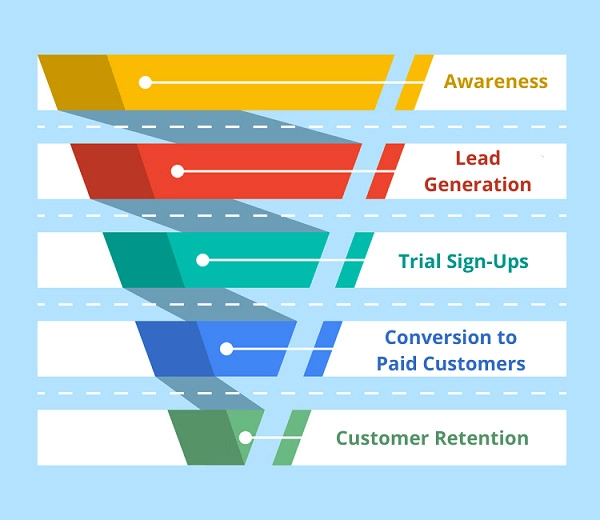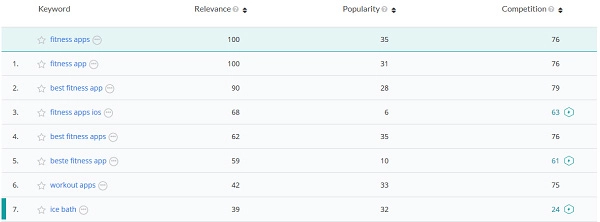
Introduction
You need to understand that content marketing is a critical aspect of a SaaS business. In fact, your content is just as important as your product in the SaaS space.
You need to build relationships and generate awareness. It’s also an excellent way for you to convert leads into customers.
In this guide, we’ll look at the best practices for creating a killer content strategy that will help you build your brand and grow your SaaS business.
Why SaaS Content Marketing Works
The best content marketing strategy for a SaaS business is the one that educates customers about the features and particular ways to use a product. You need to show customers the ins and outs of your software and how it will solve their problems.
Content such as blog posts, guides, tutorials, active communities, and videos are essential to introducing potential clients to your products; they give your customers a better understanding of what your product can offer.
This is why a SaaS content marketing strategy always works.

Source – LYFE Marketing
Best Practices for a SaaS Business to Do Content Marketing Right
1. Understand Your Buyer’s Journey
Getting your SaaS business in front of potential customers starts with knowing your buyer’s journey. From awareness to purchase, each step presents an opportunity to earn a customer’s trust and get them to take action.
For a SaaS business, a standard funnel includes the following phases:

Source – Paldesk
- Awareness: Your primary goal in this stage should be to attract potential clients to your content. Help them discover your software and show them how it can solve their problem.
- Lead Generation: By now, your lead might have spent time on your content, weighing the pros and cons of your products. It is safe to assume that they are interested in partnering up with you, which is where lead nurturing comes in. Your relationship with these prospects at this stage is hard-won, and you want to make sure you build better customer relationships and maintain them.
- Trial Sign-Ups: This is where things will start getting real. Speak more directly about your SaaS business and the products you offer. You need to create bottom-of-the-funnel content that will persuade your customers to make a purchase. For instance, you can ask them to enroll in a free trial sign-up so they can have hands-on experience with your product.
- Conversion to Paid Customers: Once you have attracted a few customers to try out your product, you will want to convert them to paying customers. Shift focus from trying to sell them why they need your product to convince them that it’s easy to use and serves their needs well.
- Customer Retention: It is one of the most critical components in achieving success. Customers are less likely to churn after reading educational blog content about getting the most out of your SaaS business. But, how do you convince your customers to keep coming back? Well-structured blogs increase customer lifetime value and reduce churn.
Customers are looking for relevant information at each point in the funnel that compliments the research they have already done. The more relevant the content, the faster it will convert.
Tailor your content so that it is delivered to them based on where your customers are in the conversion funnel.
2. Merge Your SaaS Business Sales Strategy With Content Marketing
“Your sales team and content marketers should be in constant communication with one another.”
Similarly, it is also critical to specify when a lead qualifies. Moreso, what qualifies a lead for marketing follow-up? When should your salesperson follow up on the lead? When does it convert to a hot lead?
A lead may read every email you send out, but there is no guarantee that they are ready to talk to a sales rep post your email marketing campaign. And if your content marketing strategy isn’t built to support that transformation, it’ll fail miserably.
3. Develop Customer-Focused Content Ideas
Content is the backbone of a foolproof SEO campaign. It is used for everything from landing pages to blog content, email, social media, and paid advertising. To be truly effective, content must reflect a brand’s specific audience and its values.
At every step of the customer decision cycle, you need to provide content that guides them through making a purchasing decision. Focus on their pain points and solutions so they can make a sincere decision.
Interestingly, there are many tools available to guide your content ideation process. For example, Alexa lets you identify the top search terms and other related industry terms with its Keyword Difficulty Tool.

Source – Alexa
4. Assign Goals to Your Content Marketing Efforts
The most effective way to determine the effectiveness of your SaaS business is by comparing KPI reports. KPIs are the metrics that keep a business in line with its goals. You can start with the following:
- Increase in the number of monthly visits per dollar.
- The channel, and content of the first contact, time from the first contact to sale, customer journey from the first contact to sale.
- Percent of new and returning visitors.
- Increase in the number of subscribers per dollar.
- Increase in the number of sign-ups per visitor.
Each part of your sales and marketing funnels should have different goals you need to achieve and track every day, week, month, and year.
- For top-funnel content, focus on traffic and click-based goals.
- For mid-funnel content, focus on engagement and lead generation goals.
- For bottom-funnel content, focus on sales goals.
5. Take Content Promotion Seriously
Great content is one key to the success of your company, but that’s not enough. You need traffic – otherwise, all the content in the world won’t bring your SaaS business clients and customers.
You need to make sure that your content is reaching those who want to see it the most. And you also need to ensure that only those who will benefit from your content are being exposed to it.
Google and other search engines are still the most popular ways for consumers to find information. As a result, SEO is clearly a powerful tool for marketing your content.
When it comes to SEO for SaaS business, there are three primary areas you can focus on:
- Optimize your content in terms of target keywords: Add keywords in the intro and to the conclusion. That’s a must!
- Get backlinks: The quality of backlinks is becoming more important than quantity. Five to ten quality backlinks should do the trick.
- Optimize the technical SEO aspects: For example, responsive design, meta description, headline, images and videos optimization, XML sitemap, loading speed, internal linking, etc.
- Off-site content promotion: When promoting your content off-site, there are two goals to pursue: increasing visitors and generating backlinks. Some effective channels to promote your content include influencer marketing, social media marketing, advertising, and guest posting.
6. Analyze Your Competition
If you tried content marketing before and it didn’t work, it’s because you have not identified where your real niche lies.
In general, people start their online business with the idea of pretty much doing everything and getting everyone to buy from them.
“You need to analyze your competitors and look for why people are buying their products and what factors they are considering when they choose a product.”
Analyze your immediate competitor’s backlinks to determine if they’ve been mentioned elsewhere. Analyze their content for keywords and topics, as well as the platforms they use. Use all of this information to figure out their content marketing approach.
Finally, this data will help you identify the shortcomings in your content strategy. And that will build into a strong USP for your SaaS business.
7. Outline a Content Cycle and Stick To It
Don’t overlook the importance of a content cycle in the development and refinement of your content. We have a few suggestions:
- Identify different content types and their associated objectives.
- Maintain a content calendar that lists all your upcoming events.
- Define the role of each member of the content marketing team.
- With tools like Trello, you can keep track of all your content activities and facilitate communications.
- Follow up on the performance of your content regularly and look for potential opportunities.
A series of activities that you can perform for every content format.
- Identify your target audience.
- Identify their pain point.
- Identify your target keywords.
- Identify your target platforms.
- Draft the outline.
- Conduct your research.
- Produce your content.
- Promote content on different channels.
- Analyze the performance based on KPIs.
- Gear up for your next content in response to analytics data.
- Produce follow-up content.
Take Your SaaS Business to the Next Level
Marketing doesn’t have to be hard. Content marketing is a great way to bring in new visitors for your SaaS business. The key is to understand your buyer persona, figure out the content they want, and then create content that would tie into the sales and marketing funnel.
If your content marketing machine is running smoothly, congratulations! But, there’s no better time to give it a tune-up to see what’s working and what needs tweaking to get an even better ROI.
Our blog
Latest blog posts
Tool and strategies modern teams need to help their companies grow.

In the absence of a solid lead scoring system, your sales team will spend time pursui...

Programmatic ABM combines the effectiveness of targeted engagement with automation. I...

Take advantage of the year-end holiday rush so you can boost your SaaS revenue and st...





